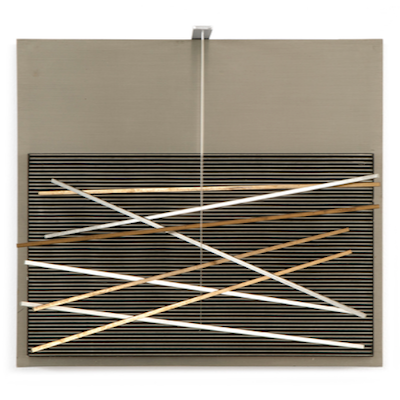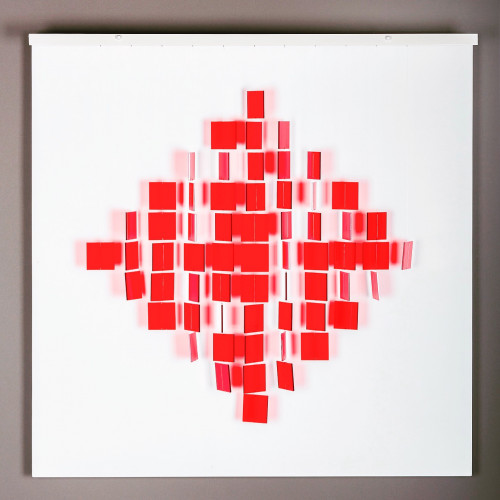Julio Le Parc
Julio Le Parc (Argentina, 1928) is a pioneering artist in kinetic and op art. A founding member of the Groupe de Recherche d'Art Visuel (GRAV), he explores light, movement, and perception through immersive installations and dynamic sculptures. Le Parc's innovative work challenges traditional art boundaries, engaging viewers in interactive experiences.
- Recently Added
- Price (Low-High)
- Price (High-Low)
- Year (Low-High)
- Year (High-Low)
Julio Le Parc
Ondes Par Déplacement Du Spectateur, 1965-2012
Sculpture / Object
Acrylic Sculpture
EUR 12,000
Julio Le Parc
Larga Marcha, 4 Bifurcaciones, 14 (black And White), 2021
Limited Edition Print
Lithograph
EUR 4,000
Julio Le Parc
Larga Marcha, 4 Bifurcaciones, 13 (black And White), 2021
Limited Edition Print
Lithograph
EUR 4,000
Julio Le Parc
Larga Marcha, 4 Bifurcaciones, 12 (black And White), 2021
Limited Edition Print
Lithograph
EUR 4,000
Julio Le Parc
Larga Marcha, 4 Bifurcaciones, 11 (black And White), 2021
Limited Edition Print
Lithograph
EUR 4,000
Julio Le Parc
Larga Marcha, 4 Bifurcaciones, 10 (black And White), 2021
Limited Edition Print
Lithograph
EUR 4,000
Julio Le Parc
Larga Marcha, 4 Bifurcaciones, 9 (black And White), 2021
Limited Edition Print
Lithograph
EUR 4,000
Julio Le Parc
Larga Marcha, 4 Bifurcaciones, 8 (black And White), 2021
Limited Edition Print
Lithograph
EUR 4,000
Julio Le Parc
Larga Marcha, 4 Bifurcaciones, 7 (black And White), 2021
Limited Edition Print
Lithograph
EUR 4,000
Julio Le Parc
Larga Marcha, 4 Bifurcaciones, 6 (black And White), 2021
Limited Edition Print
Lithograph
EUR 4,000
Julio Le Parc
Larga Marcha, 4 Bifurcaciones, 5 (black And White), 2021
Limited Edition Print
Lithograph
EUR 4,000
Julio Le Parc
Larga Marcha, 4 Bifurcaciones, 4 (black And White), 2021
Limited Edition Print
Lithograph
EUR 4,000
Julio Le Parc
Larga Marcha, 4 Bifurcaciones, 3 (black And White), 2021
Limited Edition Print
Lithograph
EUR 4,000
Julio Le Parc
Larga Marcha, 4 Bifurcaciones, 2 (black And White), 2021
Limited Edition Print
Lithograph
EUR 4,000
Julio Le Parc
Larga Marcha, 4 Bifurcaciones, 1 (black And White), 2021
Limited Edition Print
Lithograph
EUR 4,000
Julio Le Parc
Mobile Rectangle Dans L'espace, 1967 - 2009
Sculpture / Object
Acrylic Sculpture
EUR 16,000

What is kinetic art?
Kinetic art is an international movement that emerged in the 1920s and gained prominence in the 1960s, referring to art that involves both apparent and real motion. It encompasses any medium that includes movement, either relying on actual motion for its effect or being perceived as moving by the viewer. Early examples include canvas paintings designed to create optical illusions of movement. Today, kinetic art often refers to three-dimensional figures and sculptures, such as those operated by machines or those that move naturally. The movement covers a variety of styles and techniques that frequently overlap.





















































































































